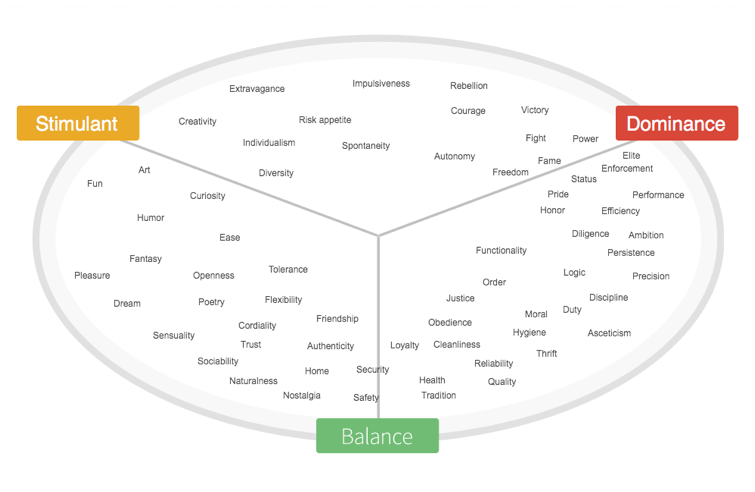How to Create Buyer Personas and Drive More Conversions
If you’re selling goods online, you probably know by now that is vital to speak your customers’ language. Avoid using generic and flat copy, and never give the impression that your product is for everybody. Learn to create buyer personas and craft a truly targeted message to get your audience to act.
Design choices, website speed and other ways of improving conversion rates are not enough. Not if your message doesn’t end up targeting the right people. In the end everything boils down to identifying your customers’ deepest needs and desires and addressing them accordingly.
In today’s article we’ll be going through the essentials of creating your own buyer personas which in return will lead to higher conversion rates.
What exactly is a buyer persona?
A buyer persona is basically an archetypal representative of your customer based on certain attributes, attitudes, demographic and psychographic characteristics.
When conducting user research with the purpose of defining your buyer persona, keep in mind a few essential questions:
- Who are your buyers?
- What are their goals?
- How do they make their buying decisions?
- Where do they buy?
Using buyer personas to improve marketing strategies
Personas, buyer personas, customer profiles, or just personas mean the same thing. They are nothing but projections of your segments of buyers, which you can identify by analyzing real data that reflects their behaviour.
You can use buyer personas across all marketing channels, from CRO to social media, SEO and SEM to improve the way you market your products. This will enable you to create a tailored and relevant shopping experience for your customers which in return will reflect in your overall business profit.
In other words, building buyer personas will help you personalize your website content, as well as your campaigns so that customers will be convinced that your product can solve their problem and so. Naturally, this will lead to an increase in purchase rate.
By personalizing your marketing approach you manage to inject authenticity, trust and intimacy, values that contribute significantly to increasing conversion rates.
How to create authentic buyer personas – a quick guide
Nowadays, consumers have countless options to choose from when shopping online. In a content-fatigued marketplace, you need a fresh approach and your entire marketing strategy needs a personal touch if you want to stand out from the crowd.
One way of doing this is by knowing exactly who your customers are and addressing only the things they care about.
Before diving into the process of defining a buyer persona, make sure you avoid common mistakes marketers usually make:
- Using irrelevant customer data;
- Making up data;
- Using only qualitative data or, on the contrary, only quantitative data;
- Believing that our personas never change.
Steps in defining buyer personas:
1. Conduct thorough user research
A great way to start your research is by checking out the Demographics and Interests report in Analytics to find out basic information about your audience, such as age, gender and interests. However, your are not to stop here.
Continue with qualitative research and dig deeper to identify what’s really important for your visitors. Find out what are their needs, their buying motivations as well as their pain points and what’s holding them back from purchasing your product.
More importantly, try to identify any similarities between your customers. This will help you define a realistic and authentic buyer persona. Don’t forget why you’re doing this in the first place! Remember that it’s easier to sell to a single person than to convince a bunch of people to choose your brand. For online buyers, relevancy is everything!
Of course that you can set up heatmaps and session recordings (and you should’ve done this by now), but bear in mind that for this purpose they aren’t enough. To gather valuable information, you need to do more. You can start by creating and sending out an email survey to your current subscribers.
The survey should include relevant questions in order to avoid gathering a bunch of useless data. Ask questions related to the person’s personal and professional background, the challenges they face in buying a certain product, how your product could address these challenges, what are their goals and think about how you can help them achieve them.
2. Tap into your customers’ core values and emotions to identify the motivations behind
Another way of learning more interesting facts about your customers is by talking to your customer service and sales teams. Because they are the ones that usually communicate directly with customers, they can surely add value to your research by contributing with useful insights on user behaviour.
Andre Morys, CEO & Founder of konversionsKRAFT, explains that if you want to create buyer personas that count, you have to look beyond the basics and into their core values and emotions. He created a framework that helps marketers identify the values and emotions that resonate the most with your target audience. The model is based on a limbic map:

The only thing you need to do is ask each person to place a sticker on the value they think resonates the most with the buyer persona. Naturally, more stickers will overlap which will help you put together an emotional profile for your persona. Once you’ve figured out where your persona lies on the limbic map, you need to pay attention to the values in the proximity. These could prove really important to your prospects.
Based on the values you’ve identified, you can start figuring out what motivations drive these people to buy certain brands as opposed to others. For instance, if a person values uniqueness, he/she will most likely prefer brands that know how to set themselves apart from the competition. They can do this either through product design or through the entire marketing & branding strategy.
3. Get inspiration from your competitors’ data
If you don’t have enough traffic or a large customer base, you can use your competitors’ data to gain insights on user behaviour.
For instance, you can visit your competitors’ social media pages to see how users interact with their brand and what kind of people they are. Pay attention to their geographic location, age, gender and shared interests.
Of course, this is not what you would call a thorough, scientific research, but it could still give you a hint, an indication of your competitors’ customers. If you sell a similar product, chances are that your competitors’ customers behave in a similar manner.
4. Put yourself in your customer’s shoes
Want to find out more about your visitors? Then do what they do and hang out where they usually hang out online.
For instance, you could read comments on blogs, get into forum discussions, or even attend relevant events. Hang out on Reddit and go through all the questions people ask regarding a similar product to see what problems they face.
In a similar manner, make sure to read product reviews that users publish on your competitors’ websites to gain even more insight into their shopping experience. Learn what motivates them, as well as what challenges they face.
5. Finally build your personas’ profiles
Now that you’ve gathered enough data, you’re finally ready to bring your personas to life.
First of all, you need to narrow down the most common details and create separate personas. Summarize and organize your data based on these key-factors:
- Demographic information (age, gender, location, education level, job title; these could be indicators of the customer being or not being price conscious; more importantly, the level of education will help you write copy that your audience can understand and relate to.)
- Psychographic information (What does the customer like and dislike? Hobbies and favourite activities? What motivates your ideal customer to act? What are his/her values, what is truly important for them?)
Take all this data and organize it into different personas, based on their common goals and challenges.
For example, we’ve recently launched an app called Ontrack Analytics and the purpose is to help online store owners better understand their business and increase sales.
At the same time, we’re also targeting marketing specialists. Through its many features, such as automated data reports, instant funnel generator and A/B testing center, the app is designed to simplify work tasks and save valuable time for marketing teams.
So, we would naturally have two distinct buyer personas who have different needs, goals and face different challenges. Therefore, we’ll have to write personalized copy for each buyer persona.
Following this example, create your own buyer personas. Humanize them by giving them a name and assigning them a picture. Additionally, create a background story for your buyer: explain how they first came in contact with your brand, how did they find out about you. This will make it easier to create personalized content and tailor your marketing message.
Bottom Line
By learning how to speak directly to the customer, you’ll be able to create highly targeted campaigns which result in higher conversion rates.
